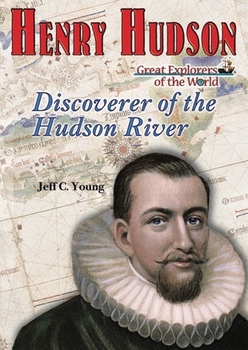
Henry Hudson
Early seventeenth-century British explorer Henry Hudson led four separate voyages in search of a Northwest passage to the Orient. He and his crew survived drastic conditions, traded with American Indians, met Inuit, and sailed closer to the North Pole than any explorer before Hudson. Author Jeff C. Young captures the reader's imagination by describing the many obstacles Hudson faced, including the mutiny of his crew on his fourth and final voyage. The Hudson River and Hudson Bay are just part of this explorer's legacy. Out just in time for the 400th year celebration of the discovery of New York Harbor in 1609.
* Reviews *
Author Young's biography about Henry Hudson reveals the world of the discoverer of the Hudson River. It was not an easy time for the explorer and his crew. In 1607, he set sail from England to find a Northeast Passage to China but failed to do so. A year later, he left on a second voyage but again failed. Not willing to give up, in 1609 he tried again and managed to reach Newfoundland. He then discovered the mouth of the Hudson River in New York. Another year passed and Hudson still searched for the illusive passage. He started questioning whether there was such a passage. He and his crew spend a cold winter at James Bay. On his fourth journey, Hudson's ship, the Discovery, became stuck in ice. They spent the winter on the shores of James Bay. The crew was cold, hungry, and ill but they managed to survive. Eventually, the Discovery crew mutinied against Henry Hudson in June 1611. He, his son, and a few of his defenders were sent out to sea and never heard from again. Hudson is credited for being the first European to travel so far up the Hudson Bay. Illustrations include maps, black-and-white and color photographs. A time line, chapter notes, glossary, further reading, and websites are included. “Bibliography,” “Further Resources,” and “Websites” are included. Part of the “Great Explorers of the World” series., Children's Literature










